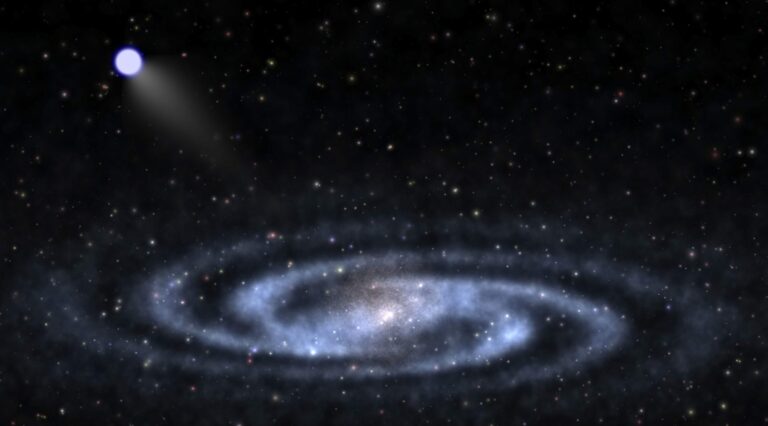A superfast star has been discovered departing the Milky Way at a staggering speed of 3.7 million miles per hour.
Astronomers have made a revolutionary discovery as they have managed to watch a star fleeing the Milky Way at a staggering speed of 6. 2 million kilometers per hour (3. 7 million miles per hour) or 1,700 kilometers per second. This mind blowing velocity was attained when the star came close to the supermassive black hole that is at the core of the galaxy.
It is moving so fast that after sometime it will be out of the galaxy’s pull and will move to the interstellar region hence moving alone in space for the rest of its life. This event represents the first time astronomers have witnessed a black hole ejecting stars from a galaxy at such tremendous velocities even though scientists had predicted this possibility thirty years ago.
Notable Australian astronomer and ANU emeritus professor Gary Da Costa was thrilled for this discovery which was made in the Australian National University in Canberra. According to Da Costa, “We have been able to track back this star to the origin of our galaxy and that is a very exciting experience.
Da Costa and his colleagues say that it was a binary star system that used to move around Sagittarius A*, the location of the Milky Way’s middle black hole five million years ago. The twin stars revolve around each other, and the closer star at some point becomes a binary partner of the black hole and is inevitably swallowed and devoured until it becomes invisible and null in the cosmic system. The delicate balance of this interaction caused the first companion of the star to be expelled at an incredibly high velocity.
This is often called the Hills mechanism, after Australian astronomer Jack Hills, who originally suggested it over thirty years ago.
Da Costa pointing to this particular star as S5-HVS1 said that it is moving at an incredible speed compared to most stars in the Milky Way, including our very own sun, by at least 10 times. Relatively, it is expected to migrate out of our galaxy in the next few years and roam around the intergalactic galaxy for some time.
S5-HVS1 stands out as the third-largest star seen to be moving at a velocity of sewage, with the other two stars attaining impressive velocities during supernovae.
Dougal Mackey from ANU College of Science, one of the co-authors of the study, highlighted that, apart from the aforementioned cases, this star may confidently be deemed the fastest ever discovered, that is, S5-HVS1.
This star was discovered by the team using database provided by the 3. ANU Siding Spring Observatory’s, nine meters Anglo-Australian Telescope. One day, when the team was analyzing star streams in the Milky Way halo that were moving toward the galactic disk during their spare time and the rest of the time working on Shearman, they found S5-HVS1.
If it leaves the Milky Way galaxy, the star will go on through the open regions of space. Da Costa believes that it will turn into a white dwarf just like our sun, with the presence of no other nearby stars.
The result of this research has been presented in Monthly Notices for the Royal Astronomical Society.
Do not forget to share your opinion with us to provide you with the best posts !




0 Comments